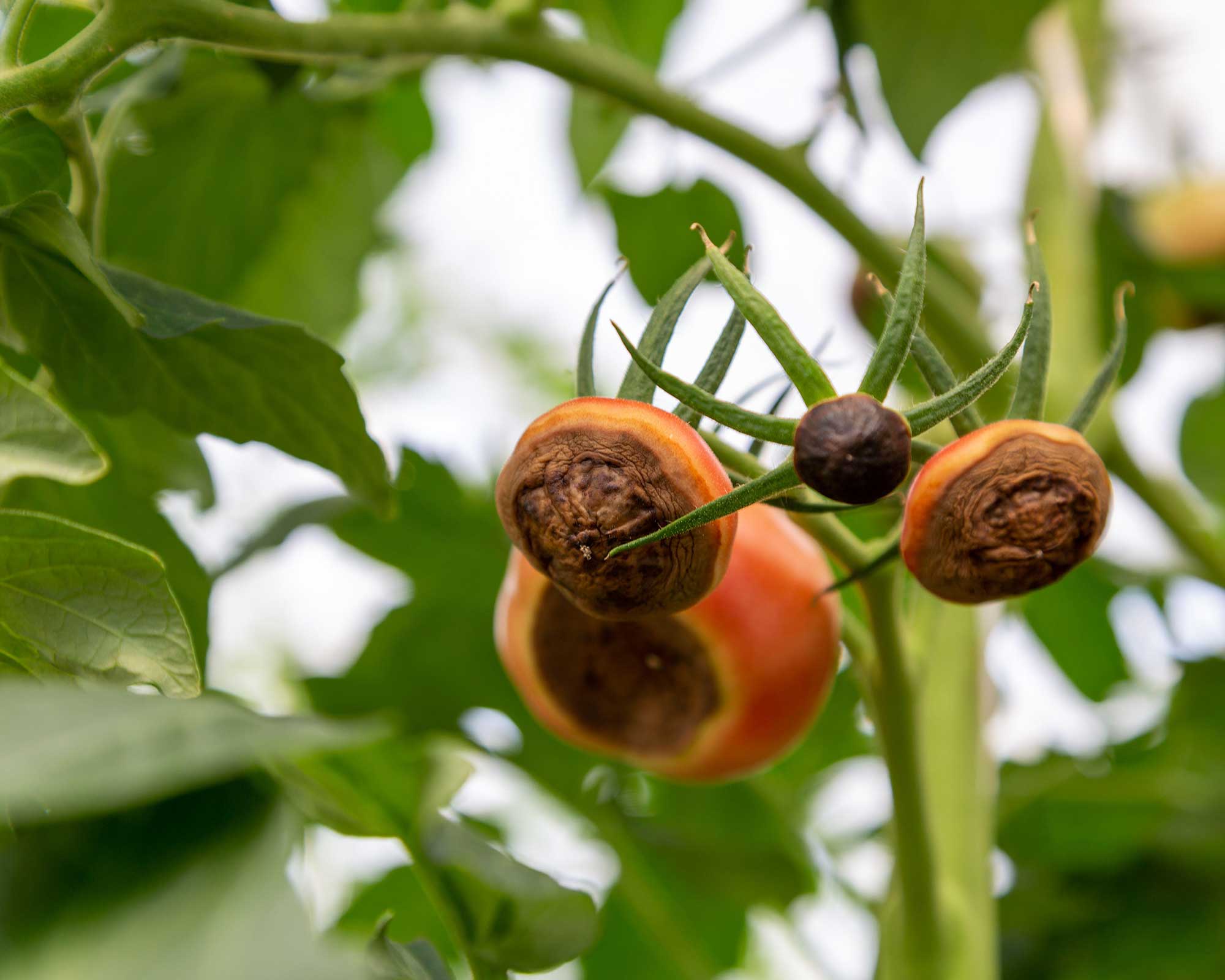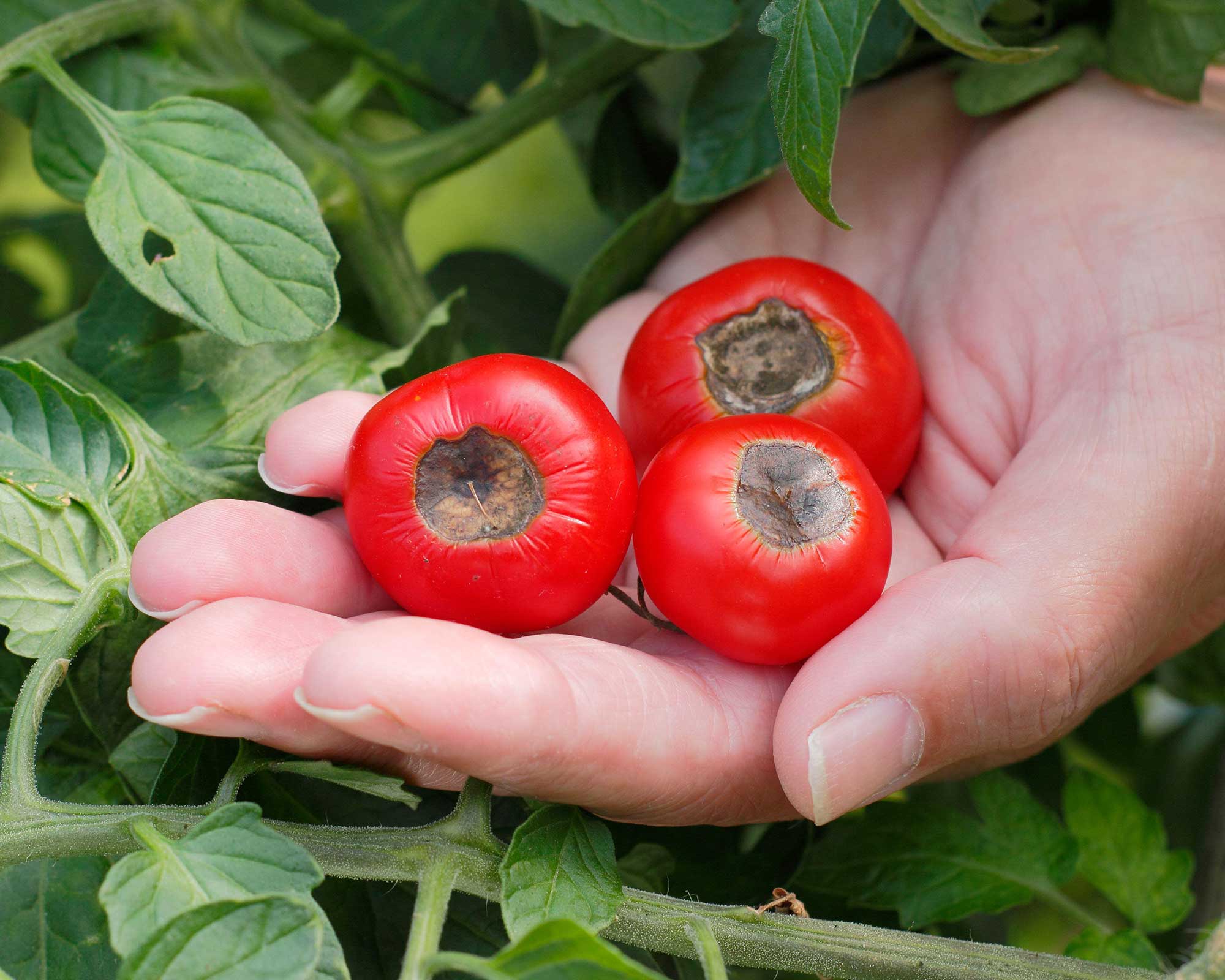Tomato blossom end rot: how to prevent this problem from ruining your crop
Learn how to identify and stop tomato blossom end rot with our guide so you can enjoy a successful harvest this year


Have you heard of tomato blossom end rot? If you're planning on growing these tasty summer crops in your garden or greenhouse, it's worth getting in the know about this common problem.
It's not a disease, nor is it caused by pests. Instead, blossom end rot, which can also affect aubergines, cucumbers, and peppers, is fundamentally caused by incorrect, or erratic, watering. This, in a way, makes it an easy issue to remedy. And the best news is, with a few small tweaks to your tomato plant care routine, subsequent fruits won't be affected.
Our guide explains all so you can enjoy your best tomato harvest yet.
What causes tomato blossom end rot?
'Blossom end rot is caused by a lack of calcium,' explains John Negus, a gardening expert for Amateur Gardening. It's rarely caused by a deficiency in the soil and compost, however (although you can always do a soil test if you want to make sure). Instead, the problem lies in the amount of water the plants get, as for the calcium to reach the fruits, there needs to be a sufficient amount.
The fruits are far away from the roots and don't compete as well as the leaves for calcium, John says. This can lead to a local lack of it at the ends of the fruits, which leads to the telltale blemishes.
If your tomatoes have limited root space (in containers or grow bags) they are more at risk of an irregular water supply. So, if you like growing vegetables in pots, it's definitely worth bearing this in mind. 'Plants in a border are less likely to be affected,' he adds.
The problem can also arise if fertilizer is added to dry soil around your plants, John continues. This is because the concentrated nutrients will restrict water uptake by the plant. 'Some fertilizer ingredients, such as ammonium salts, compete with calcium for access to the plants' roots which makes the calcium deficiency worse,' he adds.

How do you identify blossom end rot in tomatoes?
Blossom end rot can be identified by the dark blotches that develop on the fruits. These blotches are usually circular and found at the opposite end of the fruit to the stem.
Over time, the blotches will grow larger and begin to 'sink', creating a flattened appearance, explains the RHS.

How can you treat tomato blossom end rot?
Unfortunately, fruits that are already affected by blossom end rot won't recover. Pick them off and discard them. They are also safe for composting.

How can you prevent tomato blossom end rot?
You can prevent tomato blossom end rot from happening to new fruits on your plants by not allowing the compost around the root area to get too wet or dry.
'It's vital to water so that soil in a bed or border, or potting compost in a growing bag, is evenly moist at all times,' says John. 'It may need watering twice a day in very dry weather, morning and evening,' he adds. If you don't have time for this level of maintenance, consider installing a simple irrigation system.
Mulching with organic matter is beneficial in keeping the soil damp. Fertilizing the plants can also help, as long as you note the advice mentioned above. 'Feed weekly with tomato feed, watering it onto the compost,' says John.
Good ventilation is also helpful in preventing this problem, he adds, as high humidity can limit water uptake. This means giving your plants plenty of space, and opening up windows and doors on hot days if growing them in a greenhouse. This can also help reduce the risk of tomato blight – another common ailment that occurs with these crops.

The garden was always a big part of Holly's life growing up, as was the surrounding New Forest where she lived. Her appreciation for the great outdoors has only grown since then. She's been an allotment keeper, a professional gardener, and a botanical illustrator – plants are her passion.
